Red-tailed Hawk
Order: Falconiformes
Family: Accipitridae
Genus: Buteo
Species: jamaicensis
**Red-tailed Audio Below**
**NOTE that most of the bald eagle audio you hear on tv, in the movies or on the radio is INCORRECT. That audio is in fact from a Red-tailed Hawk and NOT a Bald Eagle. To hear a Bald Eagle click here: Bald Eagle
Description
-
Length: 19"
-
Wing span: 49"
-
Weight: 2.4 lb (1,080 grams)
-
Large hawk with long, broad wings
-
Adults have a broad red tail
-
Commonly with a pale chest and a dark band across the belly
-
Extremely variable in appearance with light and dark forms
-
Sexes are silimar in plumage with females being larger
-
Juveniles resemble adults but are more streaked and the have a brown tail with several dark bars across it
Factoids:
-
The most common and widespread hawk in North America, the Red-tailed Hawk is a bird of open country. It is frequently seen sitting on utility poles where it watches for rodents in the grass along the roadside
- In the courtship display a pair of Red-tailed Hawks soars in wide circles at a great height. The male dives down in a steep drop, then shoots up again at nearly as steep an angle. He repeats this maneuver several times, then approaches the female from above. He extends his legs and touches or grasps her briefly. The pair may grab onto one other and may interlock their talons and spiral toward the ground
- The Red-tailed hawk has subtle geographis variations including the Wouthwestern, Krider's & Harlan's Hawks. Although rare there are also albino Hawks throughout the entire range.
- The raspy cry of the Red-tailed Hawk is used in movies to represent any eagle or hawk anywhere in the world
About the Photos: (click on link to see this information)
All photographs and audio clips are ©Jamie Mullin 2006
Sources: Cornell Lab of Ornithology & The Sibley Guide to Birds.
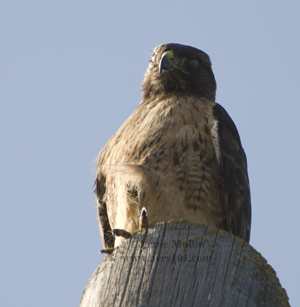 |
|---|
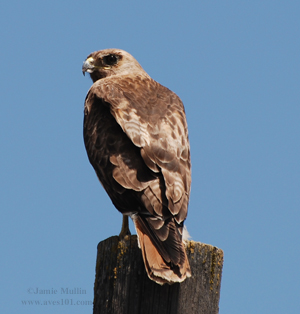 |
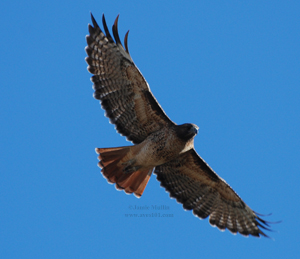 |
 |
 |
 |
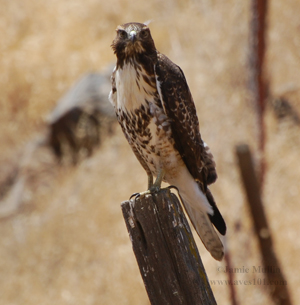 |
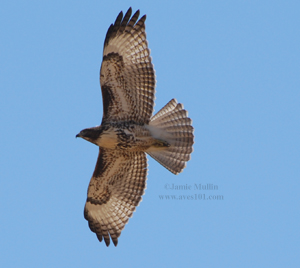 |
 |
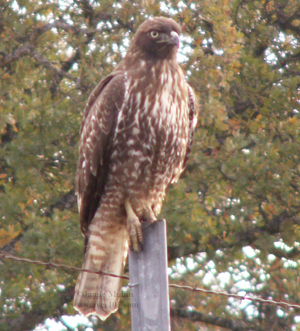 |
 |
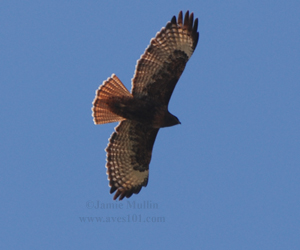 |
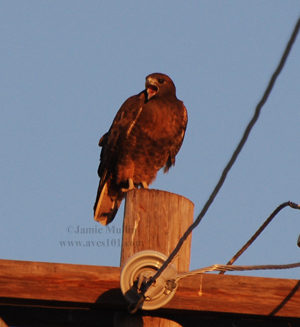 |